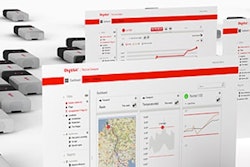What follows is an Intermediate Vendor Evaluation Analysis methodology that is well-suited to critical packaging machines such as fillers, labelers, case packers, etc. Broadly, the process breaks down into four phases:
1. Canvass the field. Before you put together your Request for Quote (RFQ) document, take some time to broadly canvass the field of suppliers and look at options, getting a rough idea of prices and capabilities. A simple checklist of requirements will suffice at this stage. You’re just looking for a rough guide—don’t hold them to it without furnishing a formal RFQ.
2. Write your requirements document and RFQ. Put together a detailed requirements document of what the project will require, and use that as the basis for the RFQ. It’s critical to have everyone on your cross-functional team review the RFQ before it goes out to the vendor, to ensure that it addresses areas important to each team member.
3. Issue the RFQ. You’ll want to issue your RFQ to ideally three, but no more than six, packaging suppliers. With the responses you get back, rate them using the Intermediate Vendor Evaluation Analysis spreadsheet tool (see download link, next page).
4. Conduct the Intermediate Vendor Evaluation Analysis. When you get quotes back from vendors, rate their responses and plug them into the Intermediate Vendor Evaluation Analysis spreadsheet. Make sure your entire cross-functional team’s input goes into the scoring procedure! This can be achieved either by everyone sitting around a table and achieving a group consensus score-by-score, or by having each team member score the vendor quotes separately, and then compare results—whichever works best for your team. This team scoring approach is especially critical if the machine or technology is a first-time buy.
The Intermediate Vendor Evaluation Analysis spreadsheet tool separates the assessment of the machine builder from the machine. The tool rates each vendor across seven key areas, including prior experience, manufacturing capability, engineering and project management, company management, support, delivery, and references.
Use the bottom tab to select a second worksheet that allows the rating of the actual machine itself across nine key areas, including technical risk assessment, throughput, reliability and maintenance, changeover, machine design, ergonomics, operator interface, safety, and cost. You can alter any of criteria within these sections to be more specific to your company or to the type of machine that you are evaluating.
To mitigate against the tendency of giving a middle-of-the-road “5” score to ambiguous criteria, restrict your scores to a 1, 3, 6, or 9 (on a hypothetical scale of 1 to 10, where 10 is best). This will force out a differentiation. If you don’t have prior experience with the vendor, it helps to speak to the vendor’s other customers who have similar products, and use that as the basis for your scores.
Liked this article? Download the End of Line Playbook here. Download the Primary Playbook here.


























